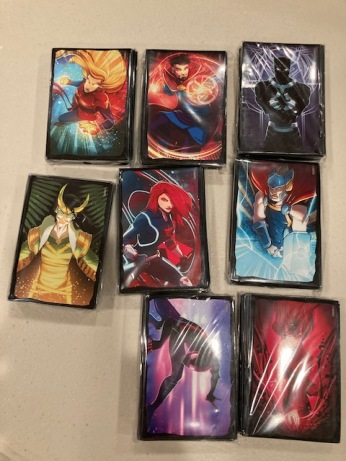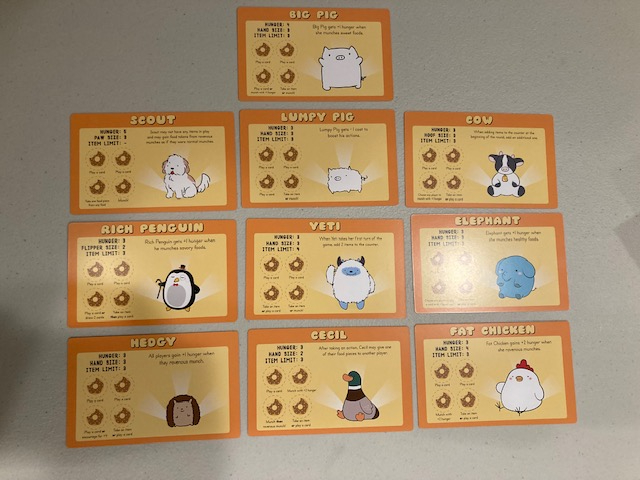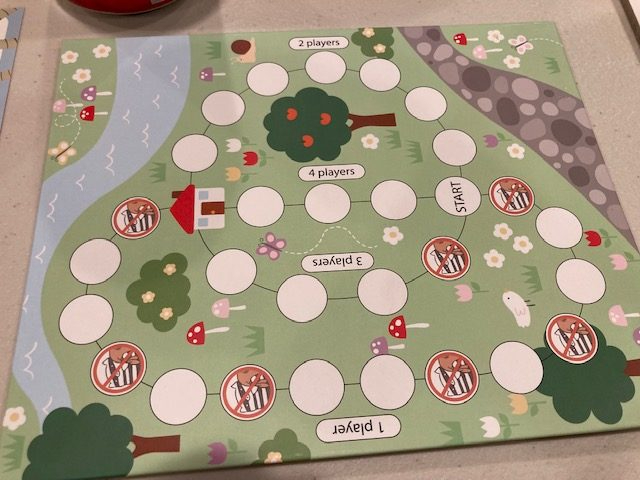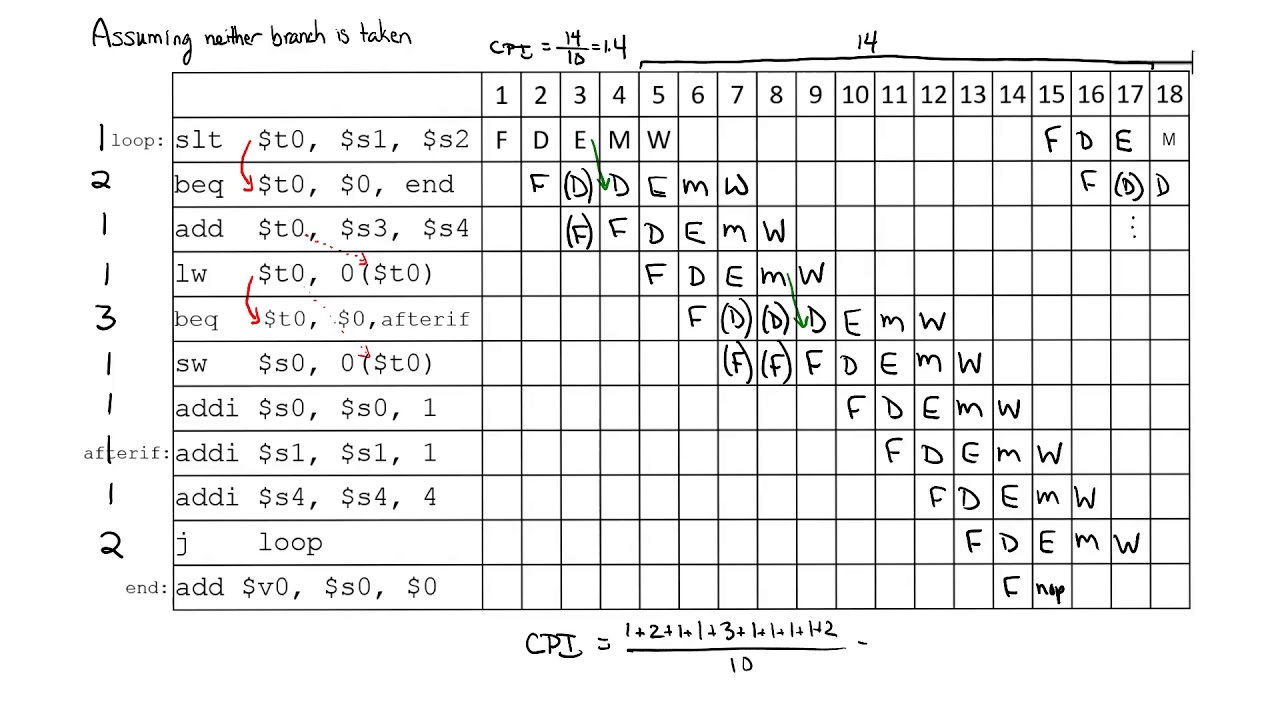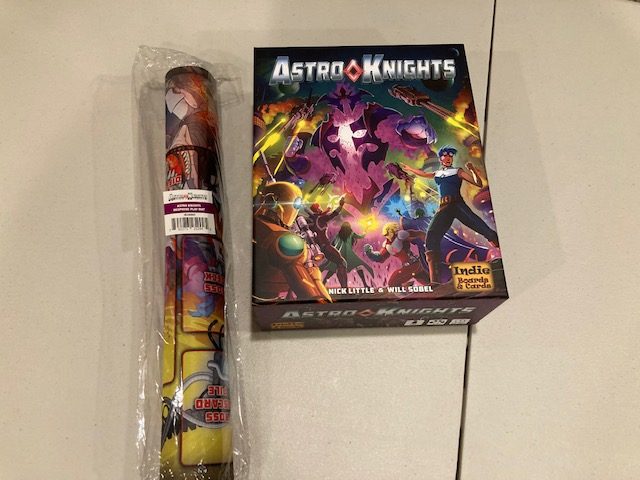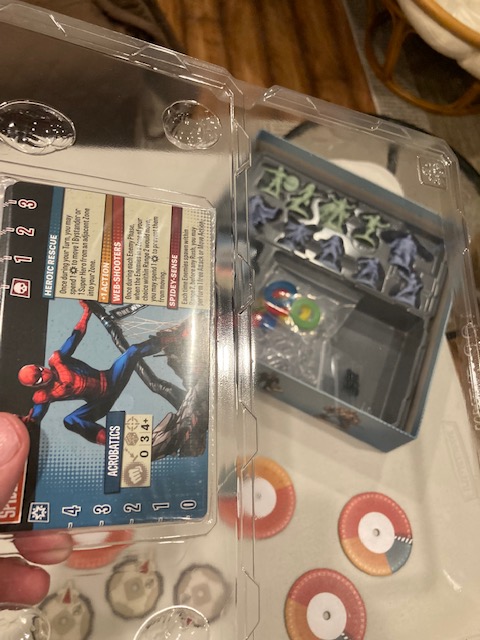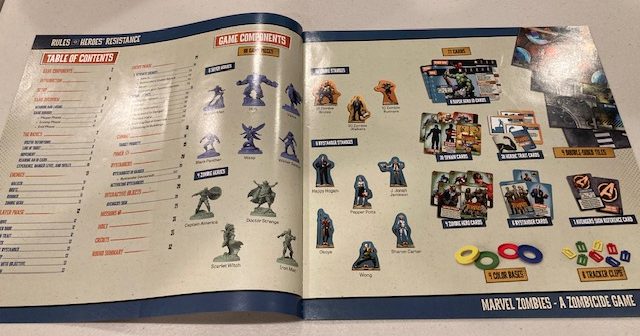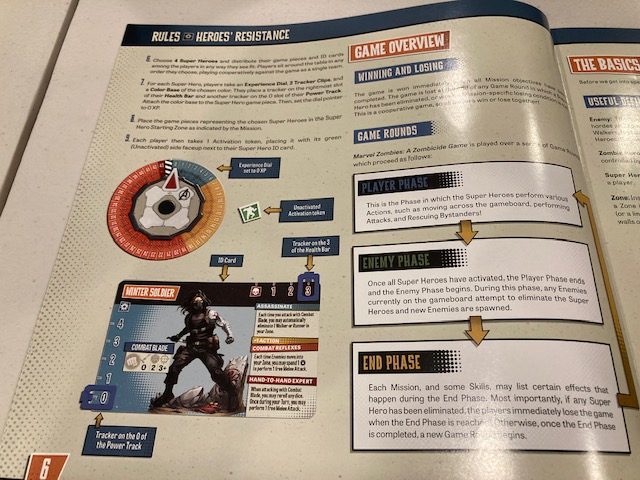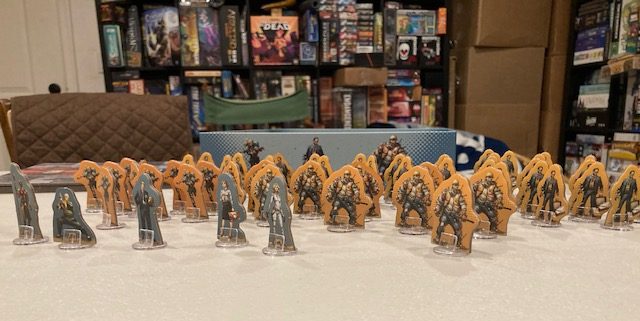
Those of your following along know closely here at Co-op Gestalt know that we reviewed Dice Throne Seasons 1 and 2, plus Dice Throne Adventures a while ago: see our discussions here. We liked how Dice Throne Adventures turned a 1-vs-1 dice battler into a cooperative adventure game!

When Marvel Dice Throne went on Kickstarter November 2021 … we weren’t that interested. Sure, we loved Dice Throne and Dice Throne Adventures, but interest in Dice Throne seemed to be waning in my gaming circles.

We played a small Dice Throne tournament at RichieCon 2021(see trophy above, made by our own Teresa F.), but there was no real interest the next year at RichieCon 2022. The trophy stayed home with Caroline, the original winner. See below.

As the interest in Dice Throne seemed to have waned in my groups, I wasn’t sure if I should back the Marvel Dice Throne battle chest on Kickstarter: it did work with Dice Throne Adventures (according to the FAQ), but it was pretty expensive. In the end, I chose not to back it.

Fast forward more than a year: I find myself seeing the smaller Marvel Dice Throne kits at Target and other places: see above for the Captain Marvel and Black Panther pack. I have heard plenty of reviews that seem to really like the Marvel Dice Throne packs! The Dice Tower in particular seemed to like it! I do love my superheroes (see my Top 10 Cooperative Games of 2022 and My Top 10 Cooperative Expansions of 2022 as well as my Top 10 Cooperative Superhero Games), so I thought it might be worth reconsidering. In the end, what put me over the top was the Marvel Dice Throne works with Dice Throne Adventures: the thought of brothers Thor and Loki adventuring together in the lands of Dice Throne Adventures just sounded so fun. It turns out you can still get the Marvel Dice Throne Battle Chest (with all 8 characters from the Kickstarter, and some Kickstarter extras) from shop.dicethrone.com: see here.

Components: Battle Chest

A big old box came in the mail in mid December 2022. See above.

Like the Season 1 and Season 2 Dice Thrones (see here), the Marvel Dice Throne Battle Chest (see above) comes with 8 characters to play: all of them are Marvel Heroes!

Each hero comes in its own tray, so it’s almost trivial to pack or unpack each hero. You can see all 8 characters on the side of the box (and where they go): Thor, Loki, Scarlet Witch, Spider-Man, Captain Marvel, Black Panther, Doctor Strange, and Black Widow.

See all the character packs in their trays above.


Stored in the middle of the box is the rulebook and some tokens. Each hero has its own set of tokens that you must put into the appropriate tray.

There are also a bunch of standees for each hero … Why? Because you need those for Dice Throne Adventures!
Heroes
A picture is worth a thousand words: here’s all the heroes unpacked!

Extras

The sleeves didn’t come with the Battle Chest, but after such a great experience with the original Season 1 and 2 sleeves, I went ahead and forked out the extra bucks for the sleeves. See above. I found them almost essential: you touch the cards a lot, and these help protect your cards.

I also forked out a few extra bucks for the Promos: see above. These probably weren’t essential: you just get one promo card per hero, a Mythic card per hero, and a randomizer card per hero.

See all the promo cards above. The Mythic cards are cool and foiled: they give each hero a one time ability. Again, not strictly necessary.

I went ahead and got all these extras (sleeves, the promos, and a dice tray (see red tray above)) to get free shipping with the core Marvel Dice Throne Battlechest. Do what you will.
Rulebook

They’ve had many iterations to get this the rulebook right: the rulebook is good.

On the Chair Test (see above), it gets about a B- or C+: it kinda works. I wish the rulebook were thinner and taller so it would fit on the chair better.

Not too much to say: good set-up, good annotations, good explanations, well organized … and it uses the last page for useful game information. (see quick reference above). Good rulebook, despite the lower score on the Chair Test.
Me vs. Me

Before jumping straight into the Dice Throne Adventures with the new heroes, I wanted a chance to run some of the Marvel heroes through their paces. I will bet many people’s first game will be Thor vs Loki. At least, that’s what I did. I played a “Me-Vs.-Me” solo game, where I just jumped back forth between the two heroes.

Both heroes played so differently! Loki was what you’d expect: a trickster with illusions as a key defense!

Thor was the powerhouse with his hammer having some incredibly interesting mechanisms! It really felt like Thor flinging his hammer!

Physically moving between the two sides of the table seemed to work really well for a “Me-vs-Me” game. Partly, it would “reset my context” as I switched from side to side, and partly it made it easier to see all the relevant hero information (since it was geared towards a different seat at the table). I really like this idea of switching perspectives to learn the two heroes: we’ve talked about the Changing Perspectives Idea many times here at Co-op Gestalt.
In the end, Thor defeated Loki, but it was a close match. I found myself role-playing both sides a lot more than I expected “Thanks, dear brother, for the hammer!” “By Odin, Loki! Yield!” I found myself muttering these things under my breath! No one else was around! These characters are so well-known and beloved, it was hard not to!

And maybe that’s why Marvel Dice Throne has more appeal than Dice Throne Season 1 and Season 2… Marvel characters are well-known and beloved characters that you want to inhabit.
I recommend a “Me-vs-Me” game to learn some of the new characters, especially before you play Dice Throne Adventures: It’s a fun way to learn the strengths and weakness of the characters.
Dice Throne Adventures

The only real acknowledgement in the Marvel Dice Throne game that this works with Dice Throne Adventures is that a punch-out figure of each hero is included for the Dice Throne Adventures.

Unfortunately, I had to steal a base from one of the characters standees in the base Dice Throne Adventures box to give Thor a base: “You shant be needing this for now”.

Recall that Dice Throne Adventures alternates between two major types of games: the Portal Crawl: Minion Battle and The Boss Battle. Each major game takes about 2 hours, so usually you only do one per gaming session. The idea of the Portal Crawl is that you and your group are looking to unlock the portal so you can get the big bad boss! There are lots of little minions battles along the way, and once you collect all all the portal shards, you can fight your way to portal!

See Thor above as he arrives at the final portal!

Once the portal has been reached, you can fight the Boss! Above, we see The Fallen Barbarian! Fighting the Boss is very similar to the “Me-vs-Me” game, with a few rule changes to automate the battle a little bit more.

Once you defeat the Boss, you then go searching for the next boss with a Portal Crawl followed by another Boss Battle .. until you get to the final Boss!

To be clear, Dice Throne Adventures is a campaign game! You are looking to take out the Mad King, and you alternate between Portal Crawls and Boss Battles as you fight your way to the final confrontation! See the campaign scoring sheet above.
Solo Play

Dice Throne Adventures played out solo the same way as it did before, except that it seemed more fun with Thor! I’d do silly Thor-like quotes as I played … “Taste Mjolnir evil lady!” “Come to me, Mjolnir!” I felt more connected to this beloved character, and I role-played him: I seemed to really care how well he did! The Portal Crawl felt like a scene in a Marvel movie where Thor has to scour the country-side looking for a portal … “Where in Odin is this portal?“

Then, there was an epic battle as Thor arrived to take out the Fallen Barbarian! “You are worthy of battle with me Fallen Barbarian! Come at me!” Again, as I played, I would inhabit Thor and have fun with it!

Of course, one of the best parts of the Dice Throne Adventures game are the upgrades for your deck: see some of the Rare and Common items I was able to find/buy after my battles. The upgrading helps keep you from having “too much dice rolling” … there is a lot of dice rolling.

The solo game was a blast. Playing a known hero (like Thor) really added a lot more fun than I expected.
Picking Heroes and Training

You can’t quite jump into cooperative play without getting to know the characters and mechanics first: remember, the rulebook from Dice Throne Adventures explicitly says “You need to know how to play Dice Throne first!”. Sara and Teresa took the roles of Scarlet Witch and Black Window (see above). We joked that this first play was like a session in the Danger Room, learning how your powers work!

Be careful when you let newer players pick Heroes just for the sake of being a hero! All heroes have a difficulty rating between 1 and 6, and that difficulty can influence a player’s enjoyment. Scarlet Witch is rated as a difficulty of 4 out of 6, and Sara found that playing Scarlet Witch frustrated her. She chose to play a different character for our later adventures.
Cooperative Play

Cooperative play went pretty well. There weren’t quite as much Marvel quotes as when I played solo, but some!

One of the things I liked was the we could help each other in combats: the solo mode always had Thor going it alone, but if one of us was struggling with a combat, one of our compatriots could come over and help us!

The Melodic Maiden caused quite a bit of consternation for Black Widow, so Thor had to come over to make sure she didn’t die early on!

We ended up playing three player, and it was probably for the best! The game barely fit on the table with 3 players and the Adventure board! One more character, and I would have had to get another table! I think that means I recommend the game for 1-3 but not four? See above as we take over the entire table!

Generally, the cooperative game lasts longer than the solo game: just from going back and forth, but it should still be “about 2 hours”.

In fact, the set-up shows you how to scale the game based on the number of players (starting health, starting gold, King’s Hand, treasure) which was real nice! The game did feel decently balanced: there were a couple of times when we thought we might die, so that’s good! This balancing for different numbers of players seemed to work.

We ended up winning!

In fact, I realized that I had been playing the treasure wrong: when you get loot, EVERYONE gets to roll the loot dice! And it feels like you will always get “about 3-4” cards as upgrades to your deck. I originally didn’t see the rule where you always get dealt some extra cards: even if you didn’t get any during play, you will still have SOME to choose from.

My group is continuing to play: the nice thing is that, even though this is a “campaign”, we can come back to the game easily: there’s not much story, just your cards and a little bit of state. If we wait a year to come back and play, it’s still easy to just drop into … “Oh ya! We gotta fight the BLAHBLAH bad guy to win!“
Conclusion

We were surprised how much more we enjoyed using Marvel Dice Throne heroes! The heroes abilities were very thematic for the heroes! For example: Thor yields his hammer with devastation! Loki fools with illusions and bag of tricks, avoiding damage whenever possible! Scarlet Witch has reality altering powers (altering dice)! Black Widow can jump out of the way!

And taking these Marvel heroes through Dice Throne Adventures was that much more fun! We found ourselves role-playing the heroes: we’d inhabit the heroes, make silly quotes (from the movies and comic books), and generally care for the heroes (probably more than we’d care to admit) since these figures are so well-known to us.

My only real complaint is that there is no Marvel specific stuff for Dice Throne Adventures: all the minions and bosses you fight are generic fantasy villains. It’d be cool if Thanos or Kang were the villains to fight the Boss Battle! Or if the minions were some lesser Marvel villains (like the bifrost giants or Toad or some lesser mutants). It worked okay, but I think an expansion which updated Dice Throne Adventures with Marvel bad guys would go a long way towards making Dice Throne Adventures more fun.

If you were on the fence for buying Dice Throne Adventures, (see our original review here), using Dice Throne Adventures with Marvel Dice Throne might just put your over the top.



